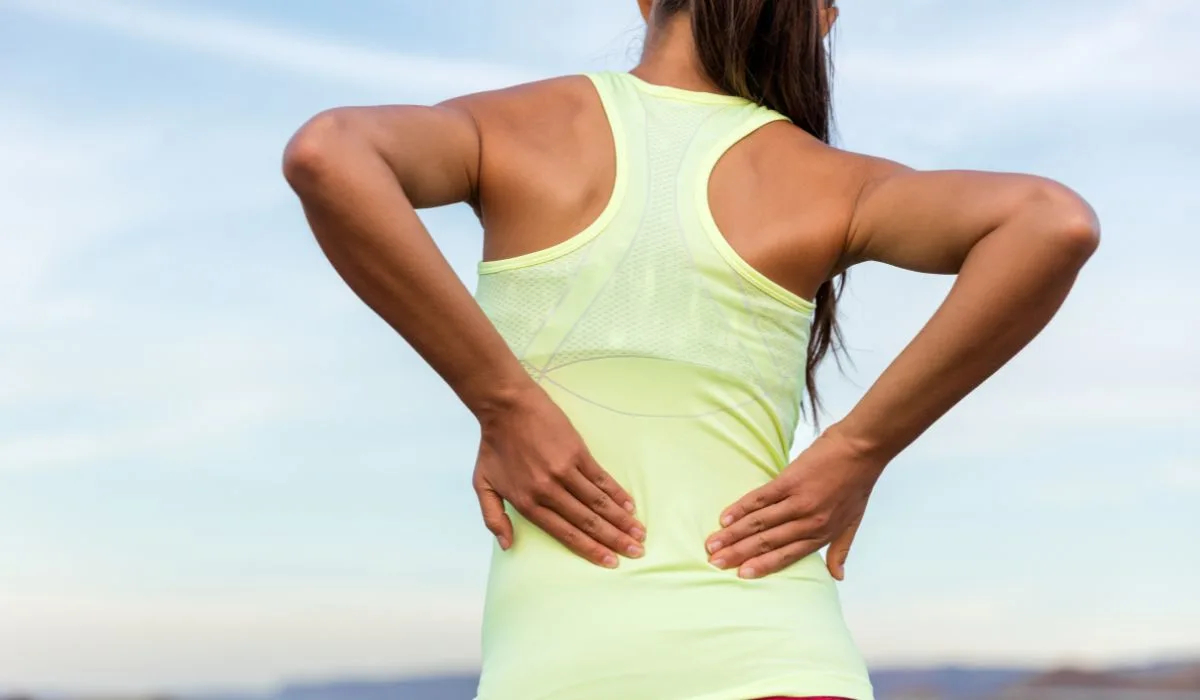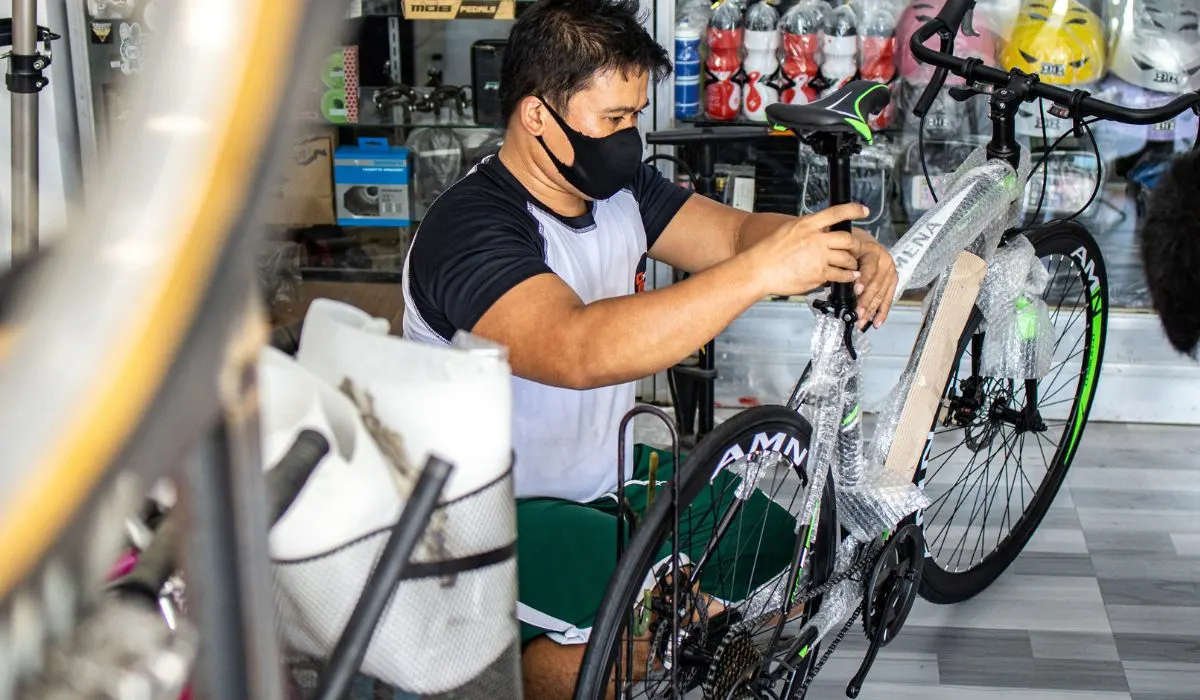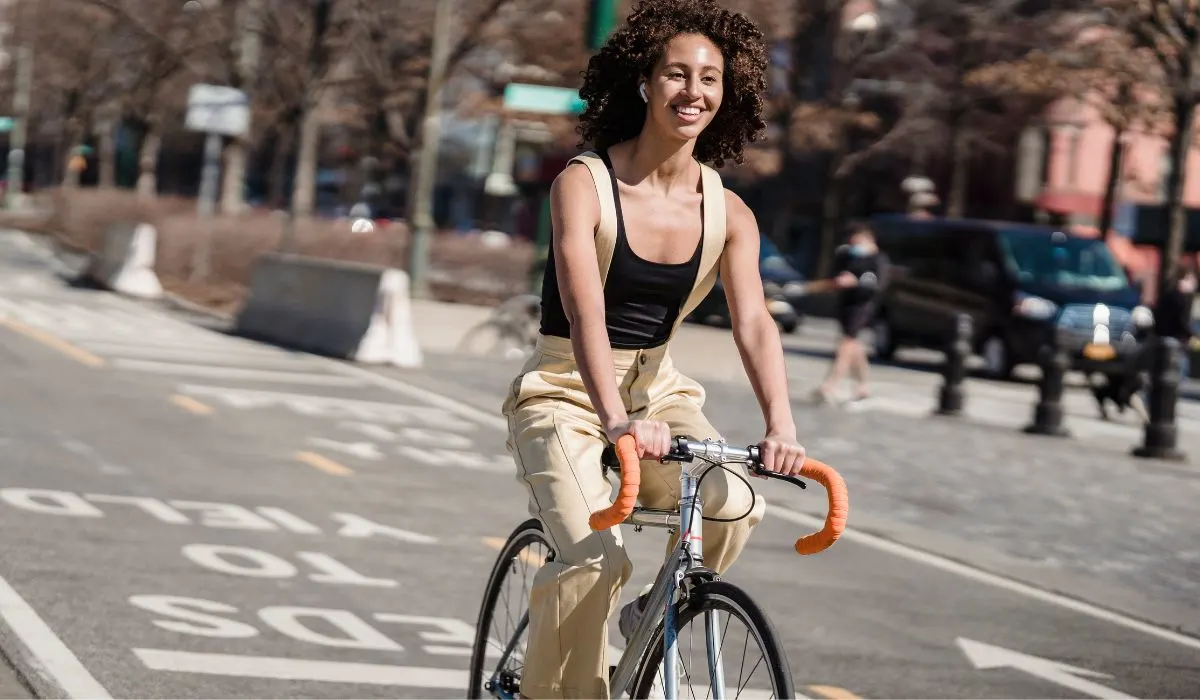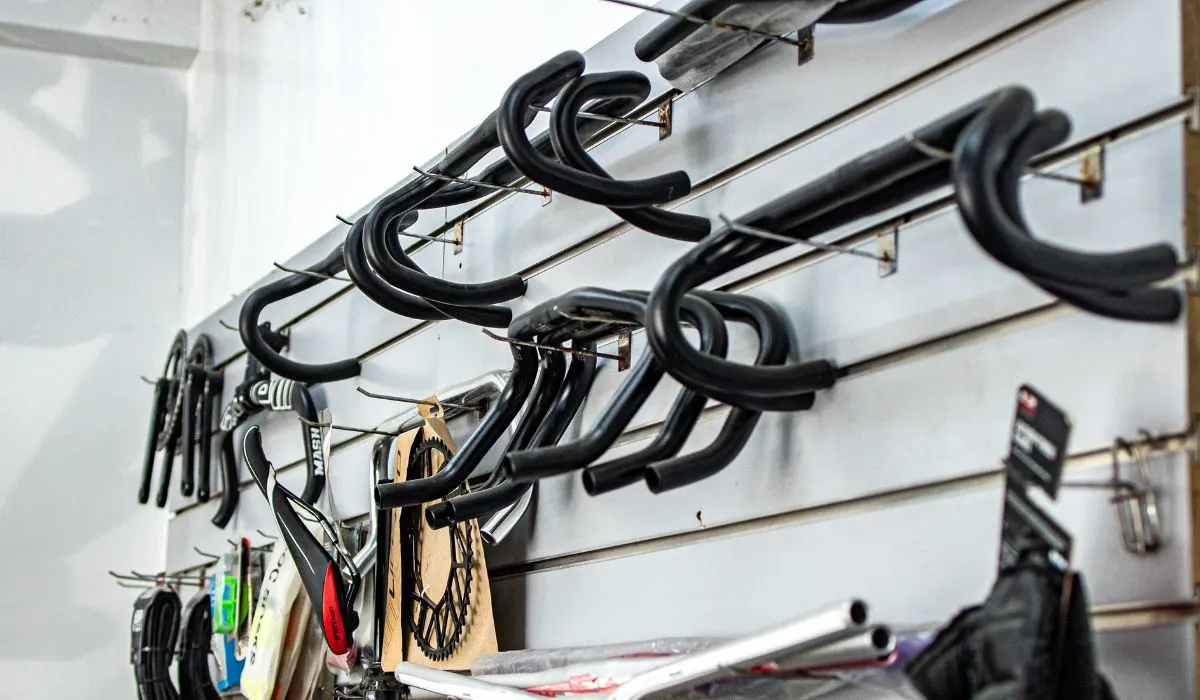
A common question and theme among the bike-riding community are if road bikes or their handlebars cause unnecessary back pain. Some people believe that modern road bikes are designed so that back pain is unavoidable. At the same time, enthusiasts claim that the correct handlebar setup can alleviate and elude any nagging back aches.
Bike handlebars shouldn’t cause any form of back pain. If you have constant back pain, the handlebars are usually too far away or too low when you ride. Fortunately, this issue has many quick fixes, including specific handlebars specially designed for cyclists with back pains.
Many cyclists know that back pain can be solved by increasing hamstring flexibility or adjusting their saddle height. However, many cycling enthusiasts do not know that by installing appropriate handlebars, much of that unnecessary back pain can be relieved.
Choosing the correct handlebars for your bike and riding style is not always easy though. This article will give you many tips and advice.
Can Bike Handlebars Alleviate Back Pain?
For various reasons, millions of cyclists experience nagging pain throughout the cycling year. One reason often overlooked is the most critical part of the bike: the handlebars.
Buying a new bicycle is one of life’s great pleasures. The smell of the fresh rubber tires, the stunning paint job, and the Shimano derailer get most of the initial attention when we eventually have enough money saved to buy a new bike.
Most new bike owners, not even for a split second, consider the handlebars that come with the bike despite it being the most critical component. However, even if you did not consider the handlebars when buying a new bike off the shelf, most of us notice it unconsciously and only realize the importance of the component when we develop significant back pain or by avoiding its drops.
While there are many ways to alleviate nagging back pain caused by cycling, altering the brand or setting up your bike’s handle is often the most painful solution.
Handlebars are important on a bike since they influence your posture and how you sit while riding. Your posture and body shape when cycling is critical as they can lead to:
- discomfort
- injuries
- back pain
Understanding the importance of your bike’s handlebars is the first and most crucial step you can take to increase your comfort and prevent injuries when taking those long weekend rides.
However, you also need to increase your knowledge about:
- The best handlebar brands for lower back pain.
- How to set them up.
- What to look out for regarding avoiding back pain injuries.
Fortunately, all the possible information you will ever need on this topic can be found in this article!

What Are The Best Types Of Bike Handlebars For Back Pain?
The best type and brand of bike handlebars will always be the one that best fits your requirements, although it is critical to understand the tendencies of each.
Some handlebars are better for back pain, especially flat handlebars. While flat handlebars like this one on Amazon, are often overlooked, especially on modern road bikes, they are the best fit for most bike riders.
NOTE: This does not include professional riders who focus exclusively on aerodynamics, power, and control.
Professional riders are usually not as concerned as casual riders about back pain. Flat bars are usually the best option for general usage for the average rider or those that do not race professionally.
The main advantage of flat handlebars for average bike owners is their design, which automatically enhances rider posture.
The correct posture and the ability to easily maintain the correct body shape are enormously impactful in avoiding any future nagging cycling-induced back pain. In addition, straight bike handlebars are more precise and predictable when riding, especially for non-professional riders.
The main advantage of straight bike handlebars is that it lowers the load on your back while riding. Ongoing and nagging back pains when riding eventually take their toll mentally, lowering the enjoyment factor of cycling we all have come to love.
Lowered or uneven bike handlebars result in undue stress being placed on your back as the weight is unevenly distributed.
Furthermore, straight handlebars ensure that your bike is set up correctly per your:
- build
- posture
- seating position
While numerous downsides are associated with straight handlebars, especially for performance purposes, they are the best type of handlebars concerning the permanent reduction of nagging back pain when riding.
How To Avoid Back Pain When Riding A Bike
There are many factors to consider if back pain is an issue when riding your bike. Each factor is important, although the bike’s handlebar choice and setup are often overlooked.
Bike Size
The first step to removing or completely avoiding back pain when going for those long weekend rides is selecting the correct bike for your needs.
Your bike selection is critical, as we all:
- are all built differently
- have different levels of flexibility
- possess alternative fitness levels
FACT: A bike that is too big or forces you to stretch too far forward is the fastest way to debilitating back pain. Leaning too far forward is the leading cause of cycling-induced back pain and should be avoided if possible.

Before purchasing your bike, it is vital to measure your height in combination with your preferred riding style, which will ease your choice regarding the bicycle’s size.
The correct bike selection will go a long way to preventing crippling back pain, which could easily result in more serious health conditions as it will strain your long-term health.
To select the most optimal bike for your riding style, the first consideration should always be the size of the bicycle. It is known that a bike is usually measured by its frame, meaning that if the frame is too big, you will be forced to stretch uncomfortably far forward.
Conversely, if the bike is too small, your back will become hunched up, leading to avoidable nagging back pain. The best way forward concerning bike size and setup is to consult a bicycle shop professional.
Bike Saddle
The second step to avoiding back pain while riding is to choose the correct saddle for your:
- bike
- riding position
- genetic makeup
Usually, expensive bikes come standard with harsh flat saddles. While professionals and cycling enthusiasts prefer flat saddles, they are not the best option for most riders.
NOTE: Modern bike shops prefer to only sell bikes to their customers when the saddle has been correctly adjusted, usually in direct relation to their current body shape.
How your bicycle’s saddle is positioned is crucial regarding riding comfort and preventing any back injuries from occurring in the future. Cycling experts note that a saddle with a flat setup will likely result in mild back pain as your cycling position will be more upright.
Conversely, a bike saddle that sloped too far downwards will enhance the rider’s aerodynamic position despite being known for causing nagging back pains. The optimal saddle setup for preventing back pain when riding is when it faces slightly downwards, giving the rider a better aerodynamic position while alleviating significant strain on your back.
As a general rule, the bike saddle should never face upwards, leading to severe health issues in the coming years. While you can adjust your saddle in accordance with your standing hip height, the saddle height should be measured professionally and set up to prevent unnecessary back pain.
Bike Handlebars
The third and most important step regarding cycling-induced back pain is selecting your bike’s handlebars correctly.
The handlebars of your bike can be set up in numerous different ways. Usually, bike handlebars should be sloped downwards for the racing setup, which is especially useful for professional riders.

Conversely, if handlebars are shifted upwards slightly, you will have greater ride comfort and alleviate nagging back pain if you are already prone to it.
Sloping your bike handlebars a few degrees upward is more comfortable because it significantly reduces the amount that you must bend over when riding your bicycle, immediately inducing additional comfort.
NOTE: While setting your bike handlebars up in this way may mean that you are in a less aerodynamic position when riding, the sacrifice is worth it to avoid back pain.
Furthermore, adjusting the bike handlebars slightly backward will make the ride more comfortable. When riding is more comfortable, and back pain is no longer a consideration, you can go on far longer rides and build up substantial cycling endurance.
Despite it being complex, the effort is worth it to correctly set up your bike for your:
- riding style
- genetic build
- injury prevention
A correctly set up bike will allow you to enjoy riding your bike just as you did when you began cycling.
NOTE: All adjustments to your bike are free and easy if you start with the handlebars and saddle settings.
Conclusion
If you want to alleviate and fix nagging cycling-induced back pain, it is essential to set up your bike correctly for your:
- riding style
- posture
- genetic makeup
There are many components on your bike that you can adjust to fix your back pain; however, you should always start with the handlebar setup as this is often the cause, while the solution is cheap and easy.
Straight handlebars are usually the best option for cyclists with nagging back pain or previous back injuries as they do not allow the rider to lean too far over, which is often the cause of injury.
If straight handlebars do not suit your requirements, you should consider adjusting the handlebars slightly backward and upwards; this immediately reduces the amount you must lean over.
You might also be interested in:

Leave a comment